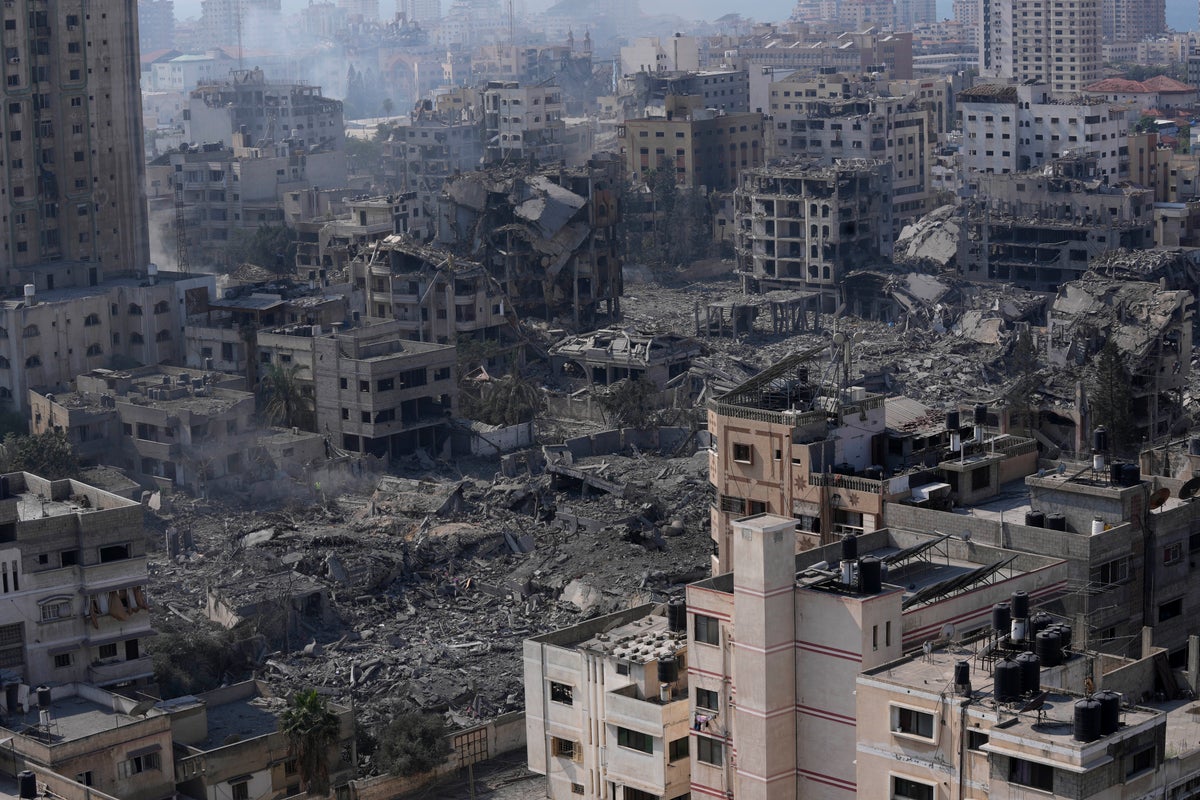
Within 10 weeks, Israel’s air-and-ground assault in Gaza has killed more than 20,000 people, a figure that amounts to nearly 1 per cent of the population before Israel’s war against Hamas.
Israel launched its devastating retaliatory campaign following Hamas attacks in Israel on 7 October that left 1,200 people dead and took roughly 240 hostages. Israel’s response has killed roughly one in every 100 people in Gaza. More than two-thirds are women and children.
That scale of death is compounded by an acute hunger crisis, warnings from international aid groups about depleting supplies of clean water and fear of disease, and the mass displacement of roughly 1.9 million people, or 85 per cent of Gaza’s population.
More than half a million people, or one-quarter of Gaza’s population, are starving, according to the United Nations. Nine out of 10 Palestinians are eating less than one meal a day, according to the World Food Programme.
Only nine of its 36 health facilities, all in the south of Gaza, are still partially functioning, according to the World Health Organisation.
Gaza, described by the United Nations Secretary-General Antonio Guterres as “a graveyard for children” last month, is also facing a dire risk of depleted clean war supplies, a “matter of life and death” that could see the deaths of more children from deprivation and disease within days, according to UNICEF executive director Catherine Russell.
Gaza’s entire population faces “crisis” level food insecurity, while 50 per cent – roughly 570,000 people – are at risk of famine, “characterised by households experiencing an extreme lack of food, starvation, and exhaustion of coping capacities,” according to a report this week from the UN-backed Integrated Food Security Phase Classification
Israel has faced growing international pressure to end its bombardments and allow for the entry of critically needed humanitarian aid, though its chief allies in US President Joe Biden’s administration have rejected calls for a ceasefire and struck down United Nations resolutions calling for the urgent de-escalation of violence.
The death toll has been publicly disputed by Israeli and US officials, while media organisations, international agencies, world governments and the US Department of State have relied on the figures from Gaza’s health ministry.
A senior Biden administration official said last month that the death toll was likely “even higher”, while the White House has stated that “many, many thousands” of Palestinians have been killed, and publicly admonished Prime Minister Benjamin Netanyahu for the growing civilian death toll.
Health researchers at Johns Hopkins University’s Bloomberg School of Public Health have also found “no evidence” of inflated mortality in Gaza’s data.
“That such a brutal conflict has been allowed to continue and for this long – despite the widespread condemnation, the physical and mental toll and the massive destruction – is an indelible stain on our collective conscience,” according to Martin Griffiths, UN Under-Secretary-General for Humanitarian Affairs and Emergency Relief Coordinator.
After the US vetoed resolutions at the United Nations pressing for a ceasefire in the conflict, the UN Security Council is expected to vote on a measure on Friday to demand the urgent delivery of humanitarian supplies into Gaza, a measure that has been repeatedly delayed this week following US pressure to amend its language.
A later draft calls for “creating the conditions for a sustainable cessation of hostilities.” US Ambassador Linda Thomas-Greenfield has said the US will support the new language.







